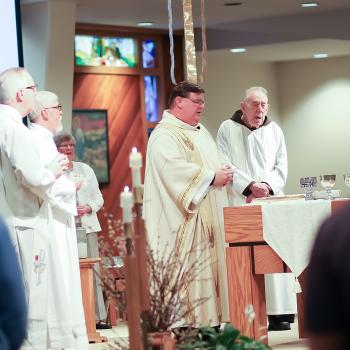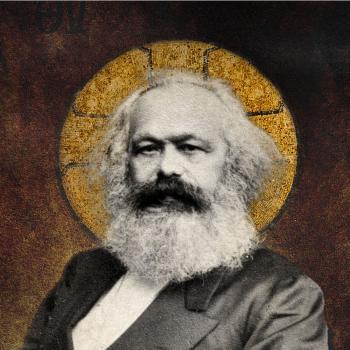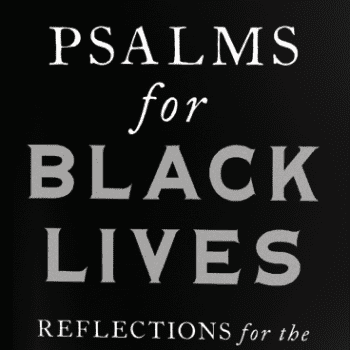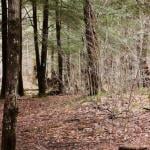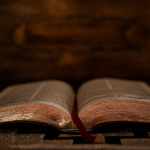Praying in a Certain Place
Lectionary Reflection on Luke 11:11-13
For July 25, 2010
This week’s text continues the theme of discipleship we have been following since the parable of the Good Samaritan. These thirteen verses cover a lot of ground.
- Request to be instructed in prayer (11:1)
- Jesus’ pattern of prayer (11:2-4)
- Parable about God’s readiness to hear our prayers (11:5-8)
- A statement about the certainty of God’s answer to our prayers (11:9,10)
- A final argument that God will answer our prayers even more readily than a human father will respond to his children’s requests. (11:11-13)
Though I’m going to focus in what follows on verses 1-4, I can’t resist offering a brief word on the parable of the Friend at Midnight. This is a parable unique to Luke’s gospel. It speaks of God’s willingness to hear and answer our prayers (unlike the grumpy homeowner). It speaks of our need to persevere in prayer, confident that God will answer us. The metaphor of bread evokes both spiritual and physical nourishment. In first century Palestinian villages, hospitality was highly valued. You served the freshest bread to visitors, even if they came in the middle of the night. Everyone baked at a communal oven, so everybody knew who had the freshest bread. The reason the friend was knocking on the man’s door was probably because he knew that household held the freshest bread. With regard to verses 9 and 10, they are proverbs Jesus made up (technically called aphorisms when we know the author). Proverbs grow out of personal experience. So I can only conclude that Jesus taught verses 9 and 10 because he had found them to be true in his own life.
Now we turn our attention to verses 1-4 of chapter 11.
I think an interesting three-act sermon could grow out of the theme “Praying in a Certain Place.” Or another possible title would be “Praying for Certain.”
NOTE: If you’re following the sermon series theme “How Not to Be A Disciple,” you can play the opposites game with each point: don’t pray regularly, don’t pray like Jesus, and don’t pray with faith.
Act One: Jesus prayed “in a certain place. “ (11:1)
As I prayerfully read through this text, I noticed that it began with Jesus “praying in a certain place.” I wonder if the disciples knew where it was. I can’t tell from the text if they came to him there or when he had returned to them. I wonder why the text doesn’t specify where this “certain place” was. It seems coy or secretive. Or maybe it opens it up to us, to the fact that praying is not limited to one certain place. Maybe it opens things up to us, to think about what the certain place is where we pray. Not just physically. But what places in our lives- temptation, regret, bereavement, are the certain places we need to pray. This prayer Jesus prayed “in a certain place” grounds us, guides us in the uncertain places of our lives.
In fleshing out this first act of the sermon on “Jesus prayed in a certain place,” we can reflect on the fact that the gospels depict Jesus in prayer. In Matthew’s Gospel, Jesus instructs his disciples on prayer in the Sermon on the Mount (6:5-9) and, in chapter 14, after he feeds the 5,000; Jesus dismisses the crowds and his disciples and goes up on a mountain by himself to pray. (14:23) Jesus is also depicted as praying at key junctures in Mark’s Gospel (6:46; 14:32); and the gospel of John includes Jesus’ impassioned, eloquent prayer for his disciples in chapter 17.
But Luke, more than any of the other evangelists, emphasizes Jesus’ prayer life as a model for ours. At all the decisive moments in his ministry in Luke’s account, Jesus is at prayer. This is a not so subtle hint with a capital “H” that we are to do the same.
At his baptism:
“Now when all the people were baptized, and when Jesus also had been baptized and was praying, the heaven was opened, and the Holy Spirit descended upon him in bodily form like a dove.” (Luke 3:21-22)
Before he searches the hearts of the disciples about his identity
“One day when Jesus was praying alone, with only the disciples near him, he asked them, ‘Who do the crowds say that I am?’” (9:18)
Before his Transfiguration:
“Now about eight days after these sayings Jesus took with him Peter and John and James, and went up on the mountain to pray. And while he was praying, the appearance of his face changed, and his clothes became dazzling white.” (9:29)
At Gethsemane:
“He came out and went, as was his custom, to the Mount of Olives, and the disciples followed him. When he reached the place, he said to them, ‘Pray that you may not come into the time of trial.” Then he withdrew from them about a stone’s throw, knelt down and prayed,…” (Luke 22:39-41)




